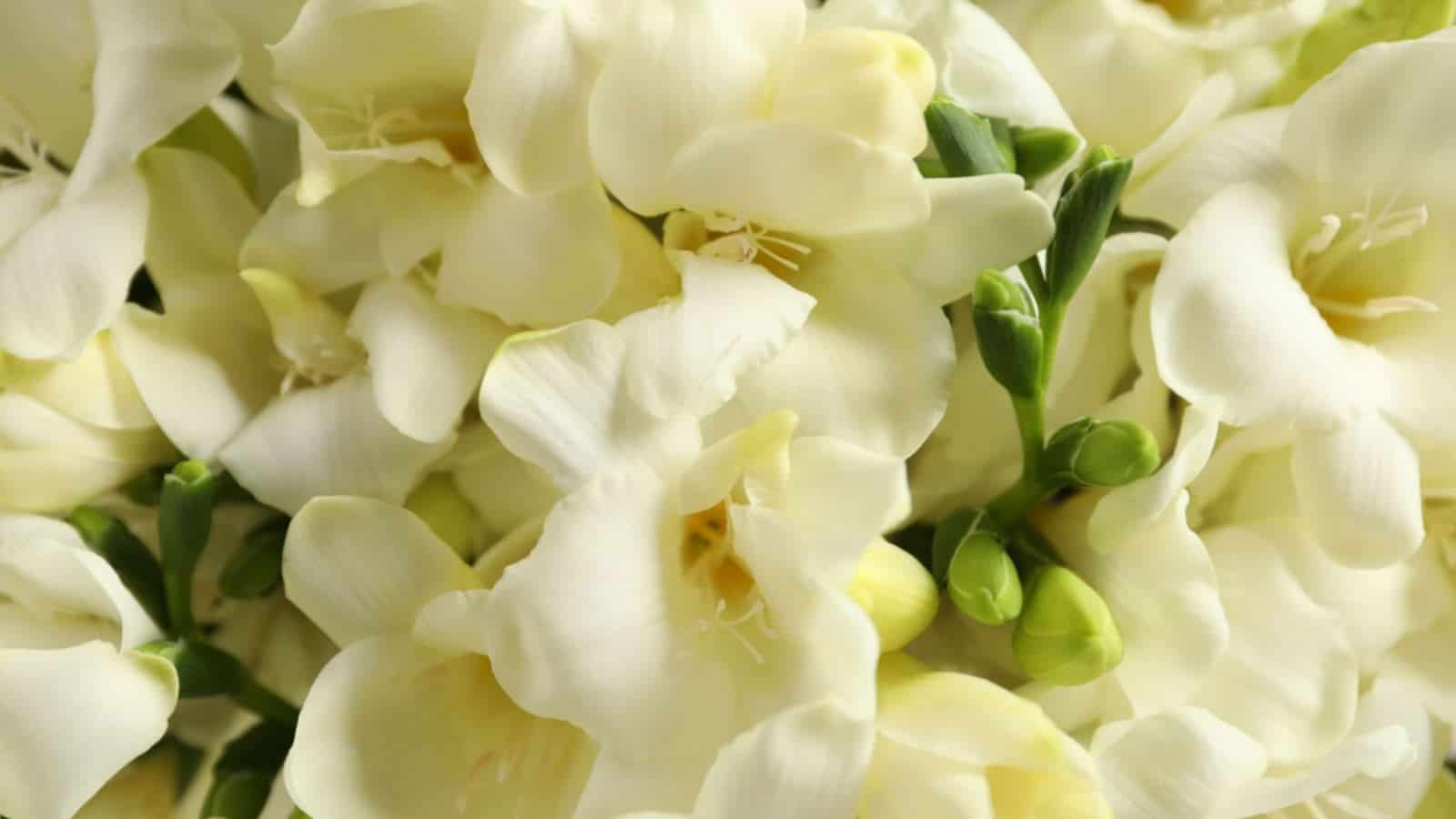[ad_1]
Freesias are a beloved flowering plant that originated from South Africa, recognized for his or her delicate, fragrant blooms and vibrant, vibrant foliage.
These vegetation are a favorite amongst gardeners and florists alike, usually utilized in wedding ceremony bouquets for his or her affiliation with purity, innocence, and love.
Freesias are grown from bulbs, or corms, which can be planted in late summer season season or early spring, relying in your rising zone. They’re hardy in USDA rising zones Sep 11 nonetheless is perhaps grown as annuals in colder climates.
Freesias need a sunny location with full photo voltaic or direct daylight. They thrive in fertile soil with a great deal of pure matter and good drainage.
The blooms can be found in a variety of colors, along with cream, mauve, and lavender, together with a pop of coloration to any yard or chopping yard.
The flower stems, which can develop as a lot as 18 inches tall, produce quite a lot of blooms and are good for creating attractive preparations in a vase.
Freesias is not going to be solely beautiful however as well as easy to develop and take care of, making them a popular choice for every beginner and expert gardeners.
As a grasp gardener, I’ve years of experience with these fairly vegetation and may’t wait to share the whole thing I find out about caring for freesias on this entire data.
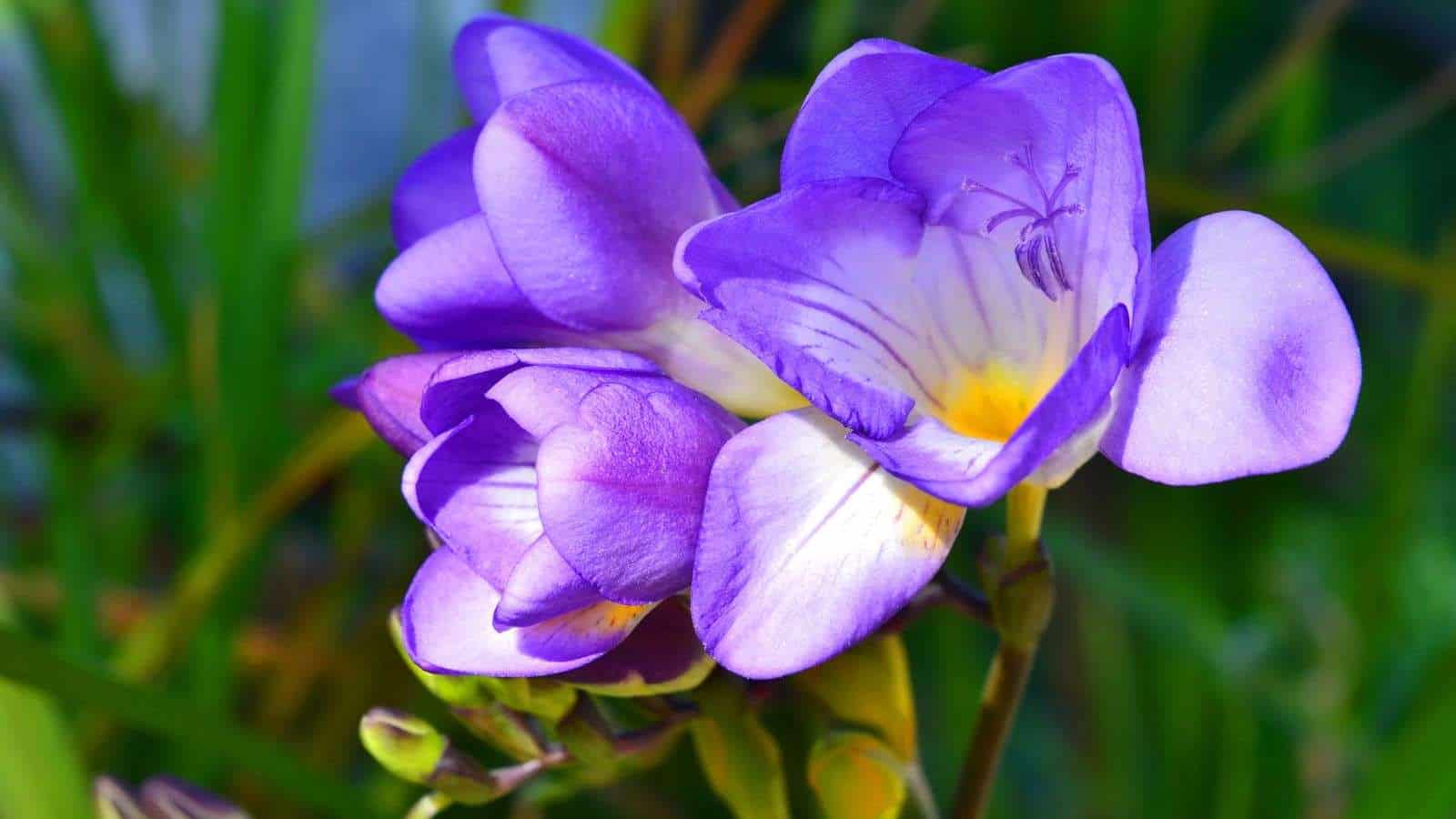
Botanical Establish: Freesia spp.
Widespread Establish: Freesia
Family: Iridaceae
Plant Kind: Perennial, corm
Hardiness Zones: 9 – 11 (USDA)
Photo voltaic Publicity: Full, partial
Soil Kind: Moist, well-draining
Soil pH: Neutral
Bloom Time: Spring, summer season season
Flower Color: Pink, crimson, white, yellow, orange, blue, purple
Native House: Africa
Freesia Plant Care
Freesia vegetation, native to South Africa, are a emblem of innocence and love, making them a popular choice for wedding ceremony bouquets.
These tender perennials, usually grown as annuals in colder climates, need a sunny location with direct daylight and fertile soil rich in pure matter.
Plant the larger corms in pots or the underside, pointed end up, in late summer season season for a stunning present of mauve, cream, and lavender blooms in early spring. Assure appropriate drainage to steer clear of waterlogging, which can lead to stem and foliage factors.
All through the rising season, current a balanced fertilizer to assist the occasion of their flower stems. Protect an eye fixed mounted out for aphids, which can usually infest the plant, and deal with the issue promptly.
After the blooms have pale, allow the foliage to die once more naturally, as that’s the plant’s dormancy interval.
Delicate
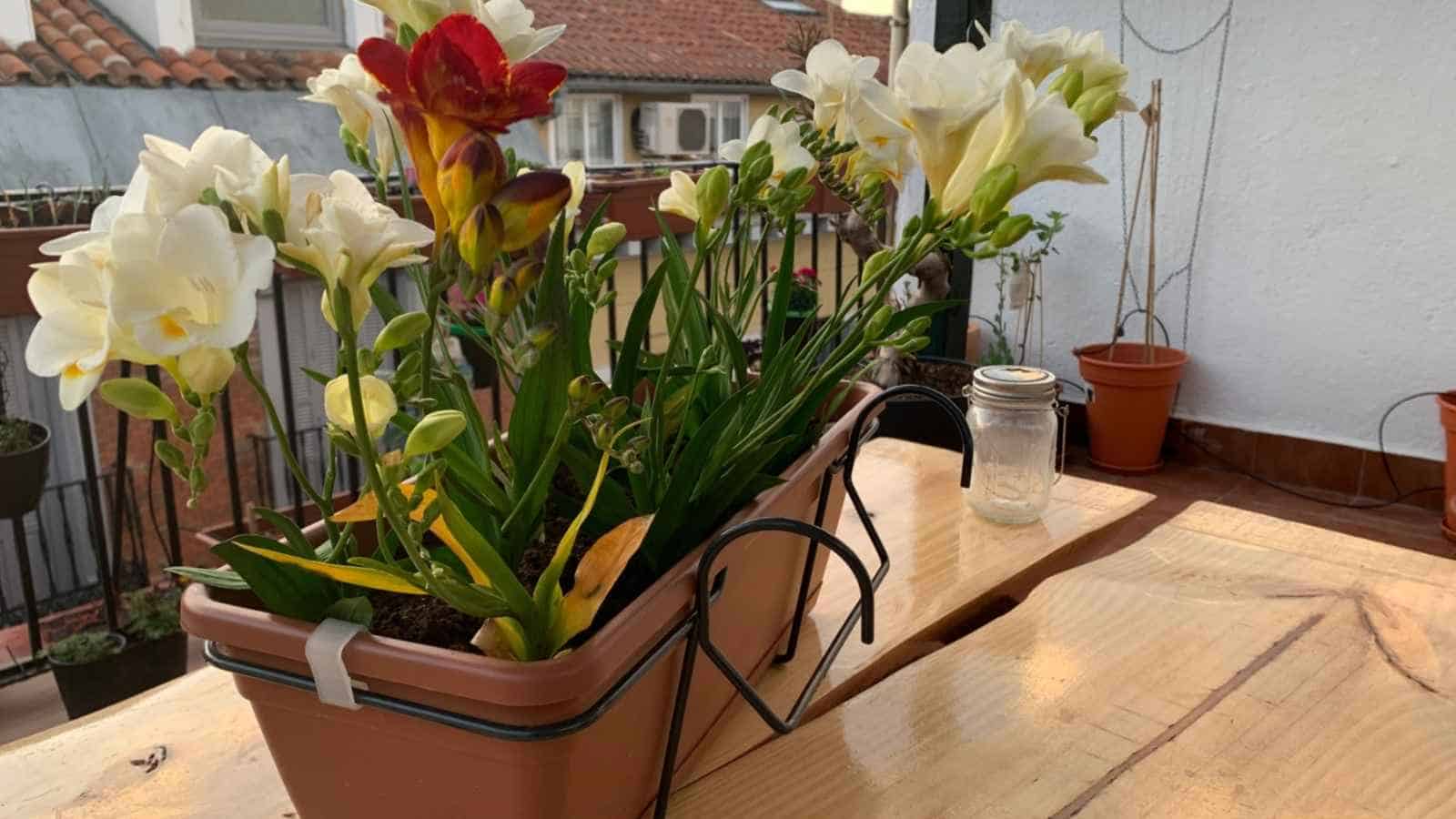
Freesias are terribly eager on direct daylight and may thrive best when positioned ready that receives full photo voltaic. This means they should ideally be positioned in a sunny location, notably in rising zones 9 to 11 on the USDA plant hardiness map.
In areas with colder climates, they are going to nonetheless be grown, nonetheless they could need a very shiny and warmth spot, paying homage to in the direction of a south-facing wall. Insufficient light may finish in weak flower stems and pale, unsatisfactory blooms.
Keep in mind, nonetheless, that whereas freesias love the photo voltaic, it’s obligatory to ensure they’ve ample moisture, notably in hotter climates.
Soil

Freesias thrive in fertile soil. They like a soil that is well-draining to cease waterlogging, which can lead to rotting of the freesia corms.
It’s essential to be sure that the soil has a great deal of pure matter, paying homage to compost, to supply the necessary nutritional vitamins for the bulbs.
In colder climates, the soil should even have the flexibility to warmth up further quickly inside the spring, so planting them in a sunny location is perhaps useful.
The proper pH for the soil is barely acidic to neutral. In case your soil is simply too acidic, you probably can add some lime to raise the pH.
Water
Freesia vegetation need their soil to be always moist nonetheless not waterlogged. All through their energetic progress interval inside the late summer season season and early spring, they’ll need frequent watering.
Nonetheless, as a result of the local weather cools in late winter, you will need to reduce watering to allow the corms to enter their interval of dormancy.
In colder climates, the place freesias are typically grown as annuals, it’s important to ensure the pots have fantastic drainage to cease waterlogging, which can outcome within the corms rotting.
Temperature and Humidity
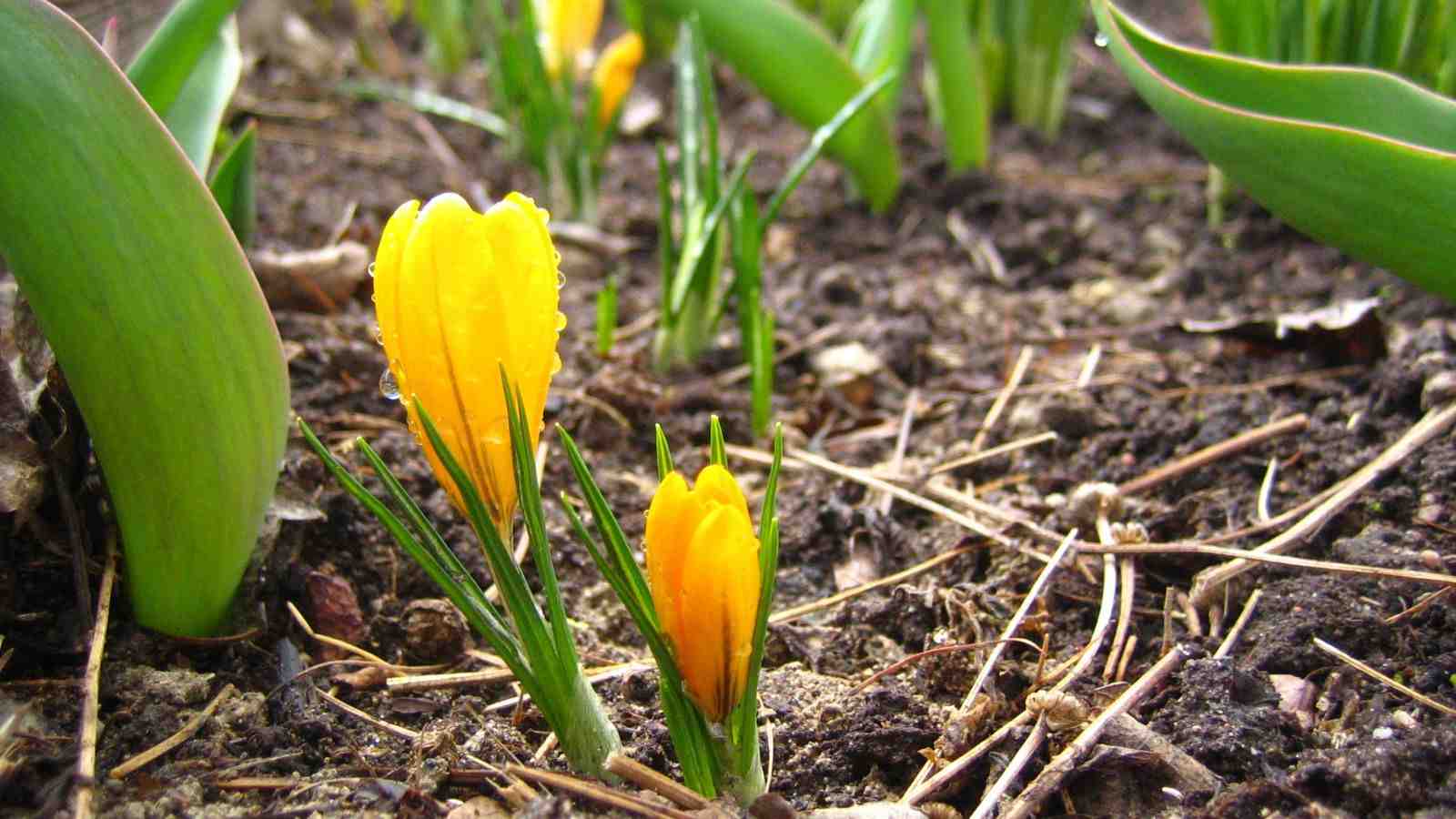
Freesias thrive in a temperature differ from the USDA rising zones 9 to 11, which interprets to a minimal of 20°F. They like cooler temperatures all through their dormancy in late summer season season and late winter.
In colder climates, the bulbs is perhaps grown as annuals or launched indoors sooner than the first frost. Freesia vegetation admire a common to extreme humidity environment, which mimics their native habitat in South Africa.
Fertilizer
Freesias have modest fertilizer requirements, nonetheless they do revenue from a nutrient improve. A well-balanced, water-soluble fertilizer utilized by the rising season can work wonders for these fairly blooms.
For best outcomes, incorporate a great deal of pure matter into the soil at planting time. This affords a fertile base for the freesia corms to draw nutritional vitamins from.
In colder climates, the place freesias are typically grown as annuals, a little bit of further fertilizer could assist compensate for the shorter rising season.
Pruning
Pruning freesias is a relatively simple job. As quickly because the blooms have pale in late summer season season, trim the flower stems once more to the underside to encourage the plant to position its energy into the bulbs.
In colder climates, the place freesias are typically grown as annuals, your full plant is perhaps away from the pots.
Do you have to dwell in a space the place freesias is perhaps left inside the flooring over winter, within the discount of the foliage in late winter when it goes into dormancy.
Be sure that to sterilize your pruning shears sooner than and after use to cease the unfold of sickness.
Overwintering
Freesias require a interval of dormancy to bloom fantastically. In colder climates, the place temperatures drop beneath freezing, the corms must be overwintered indoors.
Late winter is the proper time to ship pots of freesia indoors. Trim once more the foliage and retailer the corms in a cool, darkish place.
Sooner than the next rising season, typically in late summer season season, ship the pots once more proper right into a sunny location, and resume watering to coax the freesias once more to life for early spring blooms.
Sorts of Freesia
- Belleville: Belleville is a stunning variety of Freesia that boasts cream-colored blooms. These flowers are typically utilized in wedding ceremony bouquets, symbolising purity and innocence.
- Golden Passion: Golden Passion is an stunning form of Freesia, recognized for its golden-yellow blossoms. These vibrant, sunny blooms add a contact of affection to any yard.
- Oberon: Oberon is a popular variety of Freesia, that features lavender-colored flowers. This type is a favorite amongst gardeners who admire the fragrance of these blooms.
- Royal Blue: Royal Blue is a novel form of Freesia, recognized for its deep, rich blue flowers. These blooms add a regal contact to any chopping yard.
How one can Plant Freesia From Seed
Step 1: Getting ready the Soil
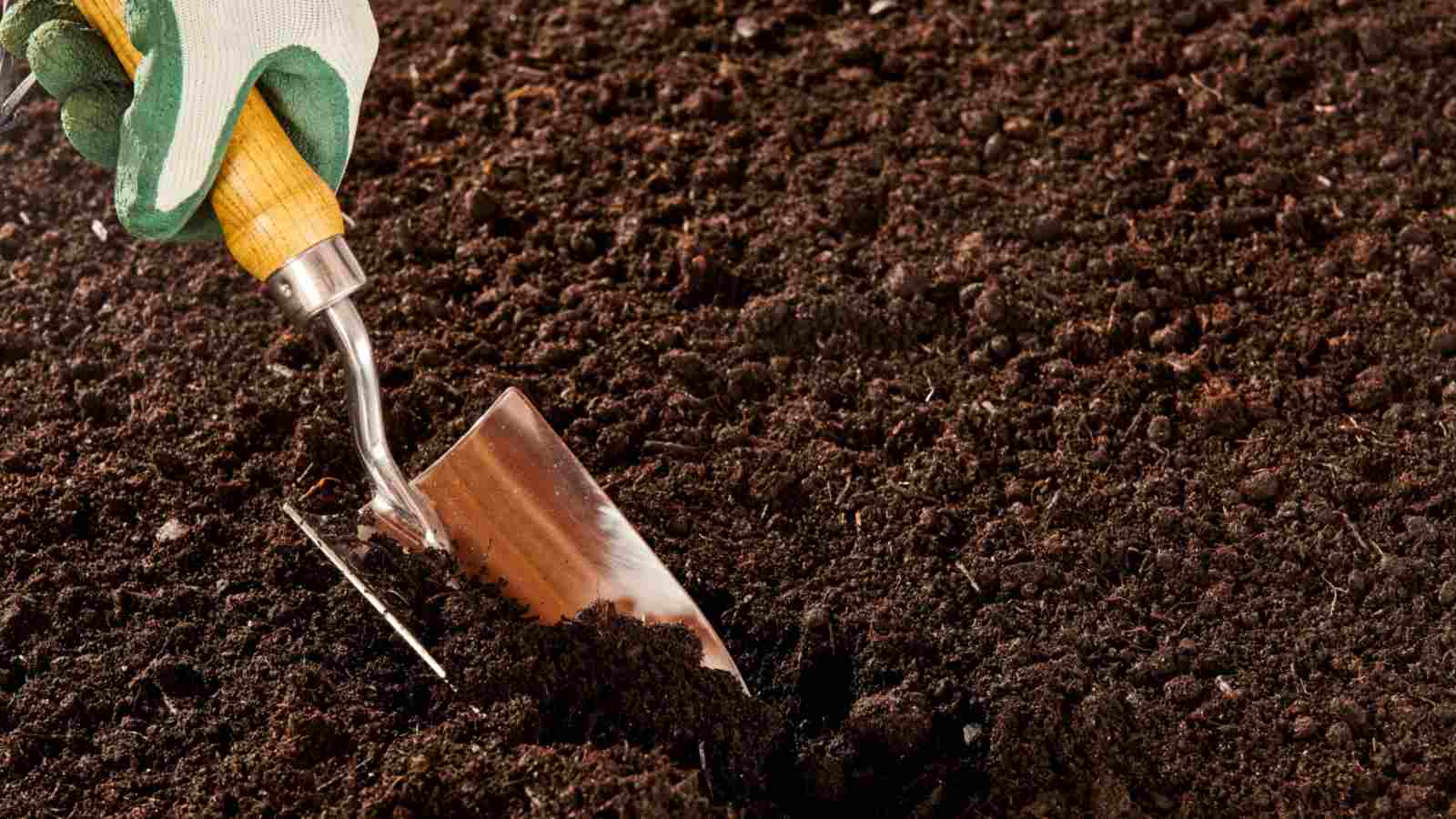
Freesias need a sunny location with full photo voltaic or direct daylight and fertile soil. Start by deciding on a spot with a great deal of pure matter and good drainage.
This will make certain the freesia corms, or bulbs, have the perfect likelihood of making into healthful vegetation.
The soil must be free and well-aerated to allow the flower stems to develop merely. Do you have to’re unsure regarding the top quality of your soil, you probably can always improve it by together with a balanced fertilizer.
Step 2: Planting the Corms
In late summer season season or early spring, it’s time to plant your freesia corms. Plant them about 2-4 inches deep with the pointed end coping with upwards. Do you have to dwell in a colder native climate, you may must plant the larger corms for increased chances of overwintering.
Each corm must be positioned about 4-5 inches apart to supply the freesias ample space to develop. As quickly as planted, cowl the corms with soil and water fully.
Step 3: Caring for Your Freesias
After planting, your freesias will enter a interval of dormancy. All through this time, it’s essential to proceed watering them, notably if there’s a dry spell.
You could additionally maintain an eye fixed mounted out for widespread pests like aphids, which can hurt the delicate blooms and foliage. Do you have to uncover any, a pure insecticide or maybe a strong blast of water could assist maintain them at bay.
In late winter, you’ll start to see the first indicators of progress as a result of the freesia vegetation emerge from the soil. By late summer season season, they’ll reward you with their beautiful, fragrant blooms.
How one can Propagate Freesia
Step 1: Select the Correct Bulbs
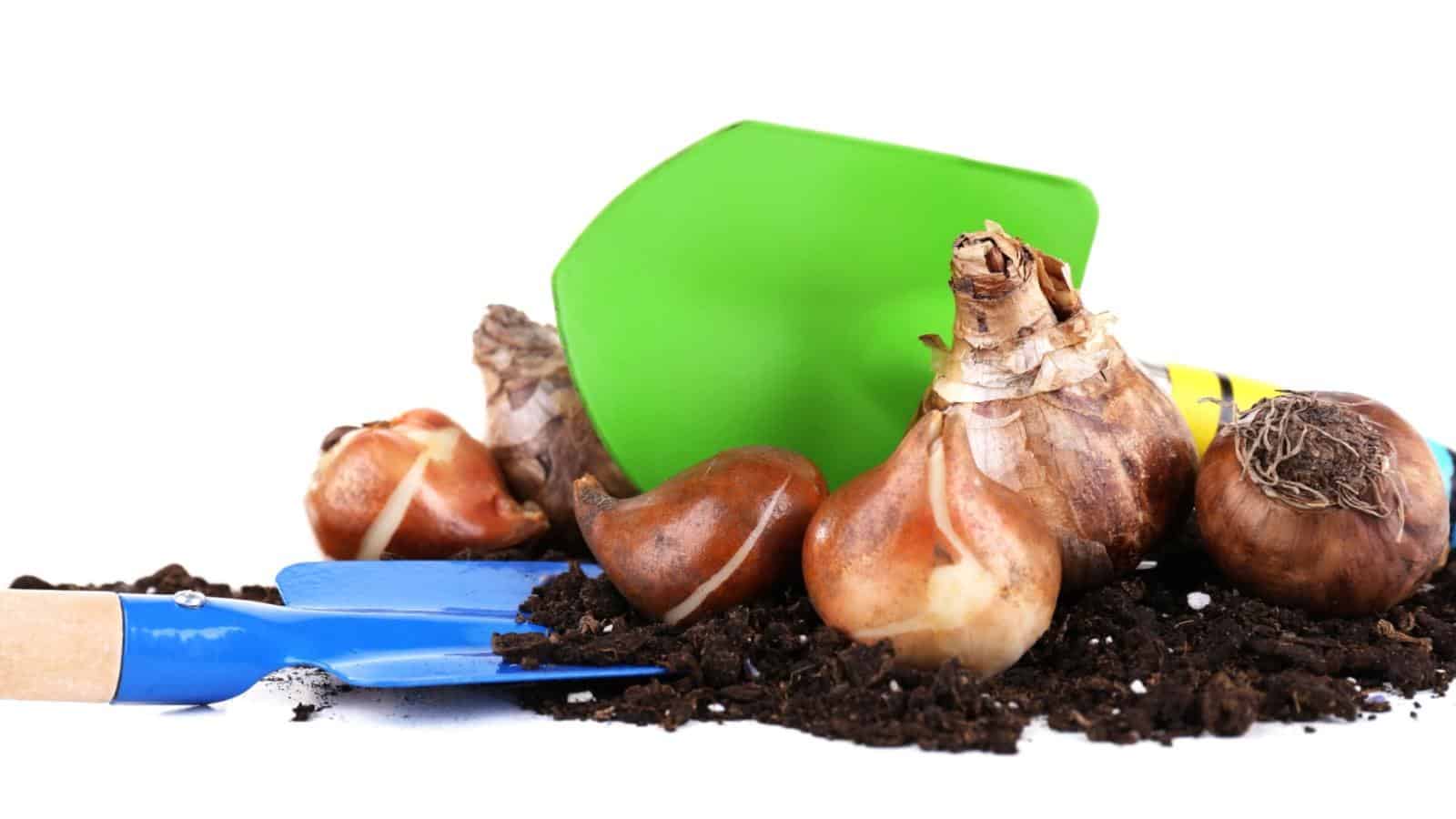
Choose large, healthful freesia corms for propagation. The larger the corm, the additional blooms you probably can rely on.
Step 2: Put collectively the Soil
Freesias thrive in fertile soil rich in pure matter. Amend the soil in your planting house with a great deal of pure supplies to ensure the corms have the nutritional vitamins they need to thrive.
Step 3: Plant the Corms
Plant the freesia corms in late summer season season or early spring with the pointed end coping with up. Home the corms about 3-4 inches apart and bury them 2-3 inches deep.
Step 4: Current Enough Drainage
Freesias dislike sitting in water, so it’s obligatory to supply passable drainage in your planting house. Raised beds or pots with drainage holes work successfully for this goal.
Step 5: Water and Fertilize
Water the corms after planting and proceed to keep up the soil evenly moist all by the rising season. Fertilize the vegetation with a balanced fertilizer every 2-3 weeks to encourage sturdy progress and ample blooms.
Step 6: Profit from the Blooms
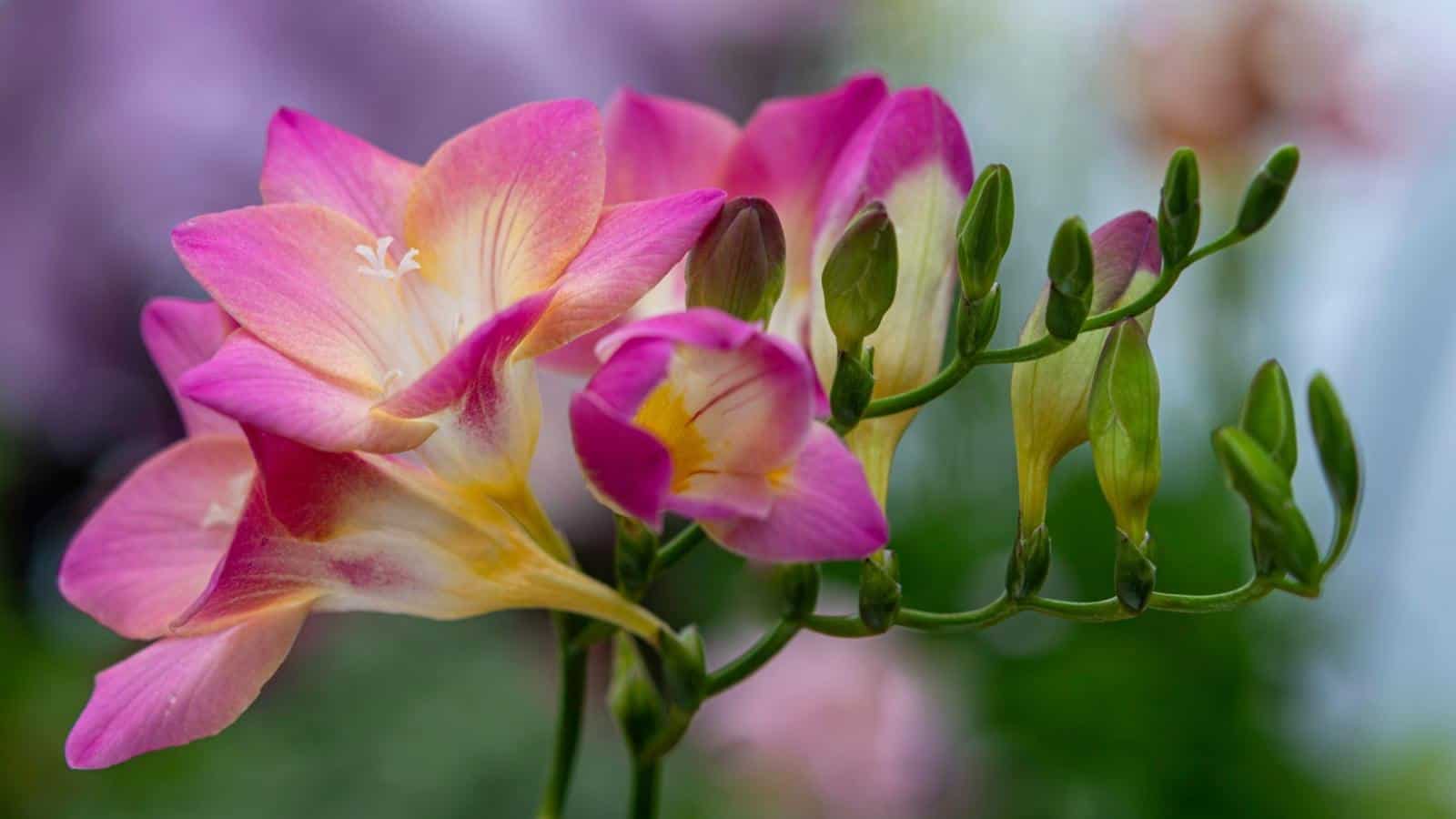
Freesias will reward you with their fragrant, vibrant blooms in late winter or early spring. Harvest the flowers for beautiful bouquets or simply have the benefit of them inside the yard.
Step 7: Put collectively for Dormancy
After the blooms fade, the foliage can also die once more. This is usually a sign that the plant is coming into dormancy. Allow the foliage to wither naturally, then reduce it once more to flooring stage.
Step 8: Carry and Retailer the Corms
In colder climates, the place freesias is not going to be hardy, elevate the corms after the foliage has died once more and retailer them in a cool, dry place until the following planting season.
How one can Pot or Repot Freesia
Step 1: Deciding on the Correct Pot
The 1st step to potting or repotting your Freesia vegetation is to select the appropriate pot. Freesias need a pot with good drainage to cease waterlogging, which can set off their corms to rot.
The pot must be deep ample to accommodate the prolonged flower stems and the corms, with some space for the roots to develop. Freesia bulbs are sometimes larger than completely different bulb vegetation, so a barely larger pot may be important.
Step 2: Getting ready the Potting Soil
Freesias thrive in fertile soil that is rich in pure matter. They like a barely acidic to neutral pH, so together with some compost or well-rotted manure to your potting soil can current the necessary nutritional vitamins.
Freesias are native to South Africa, the place they develop in full photo voltaic, so choose a sunny location in your pot. In case you’re in a colder native climate, you possibly can start your Freesias indoors in late winter and switch them exterior in late summer season season.
Step 3: Planting the Freesia Corms
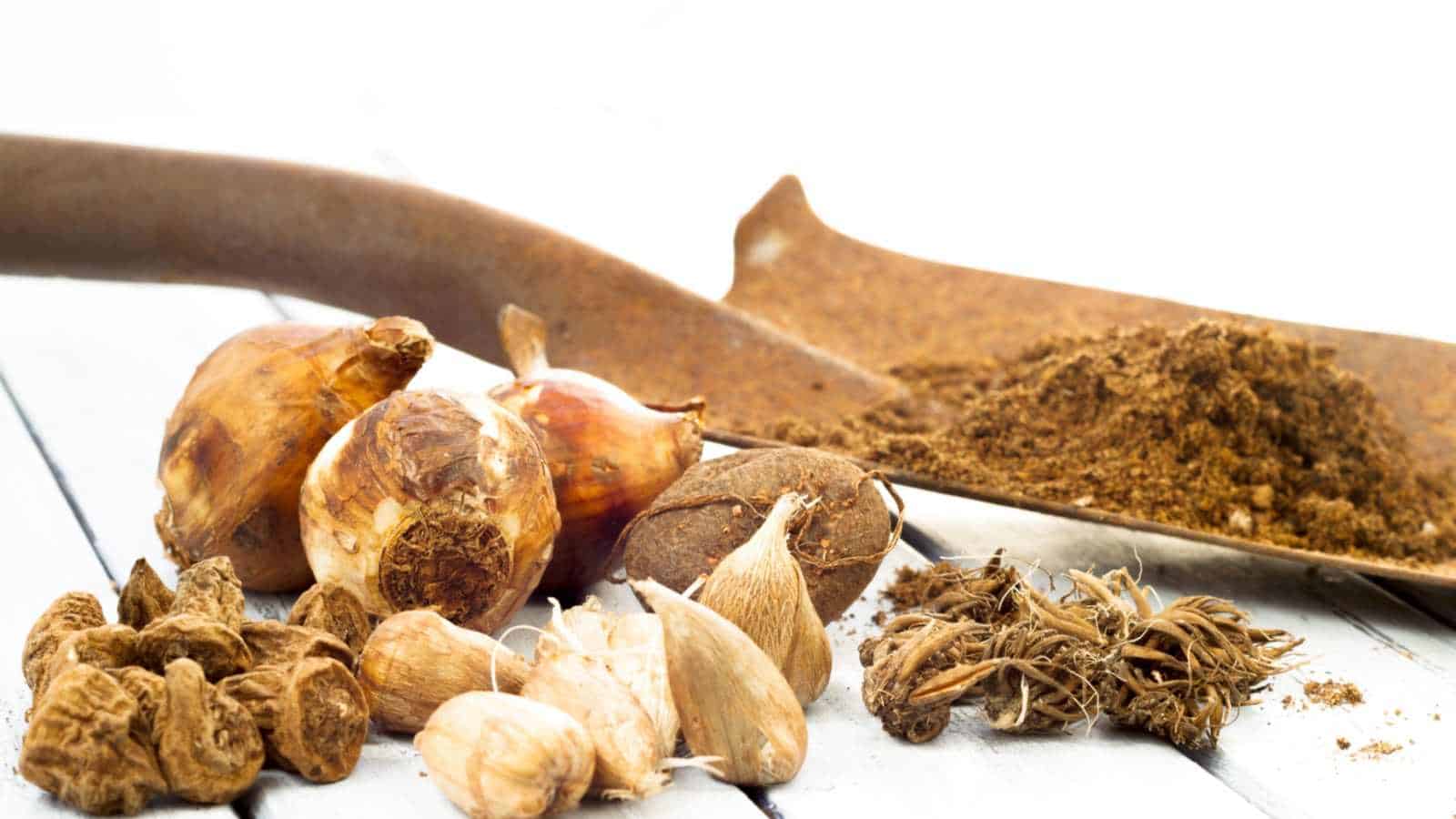
Freesia corms look like small, pointed bulbs with a dry, papery outer layer. Plant the corms with the pointed end coping with up, about 2-3 events their very personal depth inside the soil.
To ensure that you regular blooms, you probably can stagger planting your Freesia corms every few weeks. Water the newly potted corms fully and place the pot in a sunny location with direct daylight.
Widespread Pests and Plant Illnesses for Freesia
Aphids
Aphids are small, soft-bodied pests that will pose a significant threat to your freesia vegetation. These tiny bugs are recognized to cluster on the flower stems and foliage, using their piercing mouthparts to suck the sap from the plant.
This may outcome within the leaves becoming yellow and distorted, and the blooms may fail to open appropriately. Widespread inspection of your vegetation and the utilization of a mild, pure insecticidal cleansing cleaning soap could assist to deal with aphid populations.
Bulb Rot
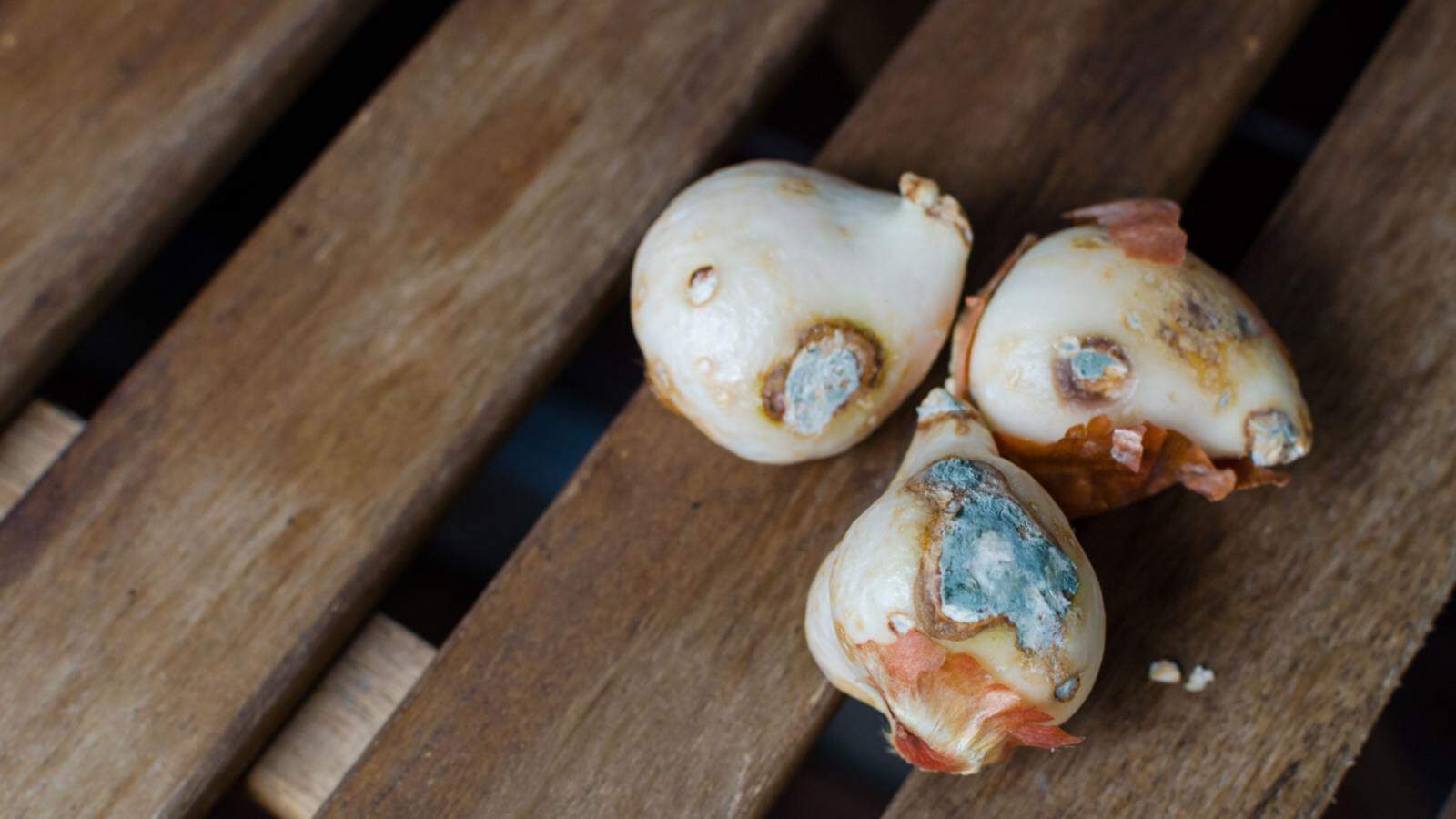
Bulb rot is an ordinary sickness that will affect freesias, notably in moist or poorly drained soil. The sickness is attributable to quite a few sorts of fungi and micro organism that will outcome within the decay of the freesia corms.
Affected corms may grow to be delicate and discolored, and the plant’s progress and blooming may be stunted. To cease bulb rot, assure your freesias are planted in well-draining soil and steer clear of overwatering, notably all through their dormancy interval.
Fusarium Wilt
Fusarium wilt is a extreme fungal sickness that will affect freesias, inflicting the plant’s leaves to yellow and wilt, and the flower stems to grow to be delicate and mushy. The sickness is normally lethal, ensuing within the eventual lack of lifetime of the plant.
Fusarium wilt is most prevalent in warmth, moist conditions, so making sure your freesias are planted in a sunny location with a great deal of air circulation could assist to chop again the possibility of an an infection.
Widespread Plant Points and Choices for Freesia
Brown Tips on Foliage
This can be attributable to an extreme quantity of direct daylight, notably in hotter climates. Freesias need full photo voltaic nonetheless can wilt beneath intense heat.
To restore this, relocate your pots to a sunnier location inside the morning or late afternoon, avoiding the powerful midday photo voltaic.
Yellowing Leaves
That’s usually a sign of overwatering or poor drainage. Freesias, native to South Africa, need well-draining, fertile soil.
In case your pots don’t have ample drainage, the roots can grow to be waterlogged, leading to yellowing. Assure your pots have a great deal of drainage holes and use a potting mix with a great deal of pure matter to boost drainage.
Transient Flower Stems
In case your freesia blooms is not going to be reaching their full potential, it is perhaps because of a shortage of daylight or a nutrient deficiency.
Freesias are annuals that thrive in a sunny location. If they aren’t receiving ample daylight, they could produce shorter flower stems.
Moreover, a shortage of nutritional vitamins, notably phosphorus, can also lead to stunted progress. Use a balanced fertilizer, paying homage to a 5-10-5 USDA fertilizer, to promote healthful progress.
Completely different Guides from Planet Pure:
Canna Lily Data: How one can Develop and Take care of Canna Bulbs
How one can Plant, Develop, and Take care of Iris Flower (Genus Iris)
[ad_2]
Provide hyperlink
